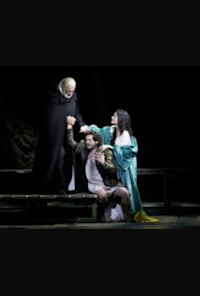In 1844 Giuseppe Verdi was to write an opera for the Teatro La Fenice in Venice for the first time; he offered the drama The Two Foscari by Lord Byron as a model , in which the carnival-like Venice full of romantic love affairs is not shown, but the strict political laws and Structures of the Serenissima take center stage. However, the famous Council of Ten is presented as easy to deceive and nobles as vengeful and scheming, so the censors rejected the proposal. Instead, Verdi composed the opera Ernani for Venice ; He was then able to present I due Foscari on November 4,
1844 in Rome at the Teatro Argentino.
The Venetian doge Francesco Foscari has to send his son Jacopo into exile for a murder allegedly committed by him - but it is an intrigue of his opponent Loredano. Foscari is torn between his love for his son and his duty as a doge. Lucrezia, Jacopo's wife, firmly believes in her husband's innocence. She wants to accompany him into exile, she is not allowed to do so. When Jacopo is already on the galley that is supposed to take him to Crete, Francesco receives a letter proving Jacopo's innocence. But it's too late: Jacopo died on the galley. Francesco has to abdicate as doge, this disgrace and the loss of his son break his heart, he dies.
Byron's drama is a chamber play, unsuitable as the subject of a great opera. Verdi therefore instructed his librettist Francesco Maria Piave to also incorporate stirring moments: "Exert your mind and invent something that causes a little sensation." Despite large choral scenes and passionate outbursts of emotion, the work has retained its intimate character. It is precisely for this reason that Verdi succeeded in renewing his style with I due Foscari , and his character portrayal was refined and condensed. Verdi used themes associated with the figures, which, with transparent orchestration, give the work an artful structure - he thus offers, mostly unnoticed by music history, an alternative to Richard Wagner's leitmotif technique, which was developed at the same time.









